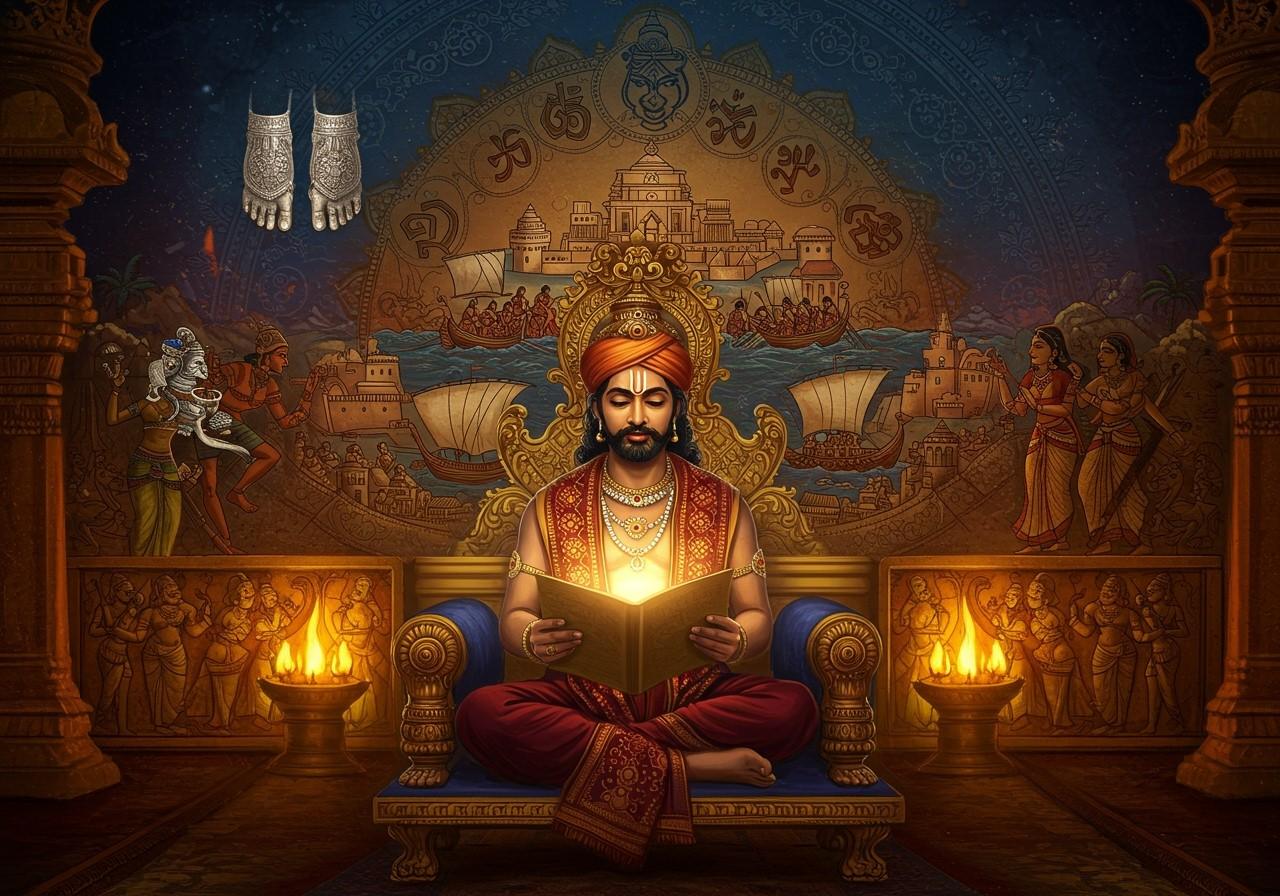
Ilango Adigal, a celebrated Tamil poet, is renowned for his epic, Silappathikaram. His work holds a significant position in Tamil literature, offering profound insights into ancient India’s cultural heritage. This article delves into Ilango Adigal’s historical context, Silappathikaram’s importance, and its enduring influence.
Historical Context of Ilango Adigal
Understanding Ilango Adigal’s Era
- Ilango Adigal is believed to have lived around the 5th century BCE, a period of great literary and cultural flourishing in the Tamil region.
- Tradition identifies him as a Chera prince who renounced his royal life to become a Jain monk, a decision reflected in the moral and philosophical themes of his epic.
Literary Significance of Silappathikaram
Exploring the Epic Work
- Silappathikaram, meaning “The Tale of the Anklet,” is considered one of the five great epics of Tamil literature. It narrates the tragic love story of Kannaki and Kovalan, interwoven with themes of morality, justice, and fate.
- The epic is divided into three books: Puhar Kandam (The Canto of Puhar), Madurai Kandam (The Canto of Madurai), and Vanchi Kandam (The Canto of Vanchi), each representing a different stage in the narrative’s progression.
Kannaki: A Symbol of Virtue and Justice
Kannaki, the central female character, embodies chastity, devotion, and unwavering righteousness. Her transformation from a loving wife to a fierce advocate for justice underscores Ilango Adigal’s portrayal of female strength and resilience.
Ilango Adigal’s Time Period and Cultural Impact
Cultural Flourishing During the Sangam Age
- Silappathikaram offers a vivid depiction of the Sangam Age, often referred to as the “Golden Age” of Tamil literature. This era witnessed a surge in literary creativity, with works like Ettuthogai (Eight Anthologies) and Pathupattu (Ten Idylls) showcasing the rich poetic tradition.
- The Sangam period was marked by urbanization, thriving trade networks, and cultural exchanges with other civilizations, including the Greeks and Romans. Ilango Adigal’s work reflects this cosmopolitan environment, capturing the diversity and dynamism of the time.
Analysis of Silappathikaram
In-Depth Look at the Epic
- Silappathikaram masterfully blends prose and poetry, employing the akaval meter, a classical Tamil poetic form known for its rhythmic beauty and evocative power.
- The epic’s settings span important regions of ancient Tamil Nadu, providing a geographical and cultural map of the time. Ilango Adigal’s meticulous descriptions of rituals, customs, and everyday life offer valuable insights into the socio-cultural context of the Sangam period.
Themes of fate, destiny, and divine intervention are central to the narrative. The character development, particularly of Kannaki and Kovalan, is intricate, with their motivations and actions driving the plot. The moral and ethical dilemmas explored in the epic resonate even with modern readers, highlighting the timelessness of Ilango Adigal’s work.
Silappathikaram integrates elements of ancient Tamil Sangam poetry and Sanskrit rhetoric, featuring mood poetry, dialogues, folk songs, and detailed descriptions of dance and music. Kannaki’s transformation from a devoted wife to a symbol of justice and eventually a goddess is a pivotal aspect of the narrative.
Considered by many to be a historical account, the text is linguistically dated to around 1,600 years ago. Silappathikaram’s enduring influence on Tamil culture is immense, continuing to inspire various art forms, dance, music, and literature within Tamil society.
How Poojn.in Supports Your Connection to Tamil Literary Heritage
Poojn.in offers a curated selection of items to honor the rich Tamil literary tradition and its spiritual connections. For those interested in Lord Murugan, a prominent deity in Tamil literature and culture, we offer:
- Brass Vel (spear) in various sizes for home worship, allowing devotees to connect with the deity’s power and symbolism.
- Traditional kumkum and vibhuti sets for daily prayers, essential for traditional Tamil rituals and ceremonies.
We also provide a wide array of copper and brass deepam lamps for ritual lighting, authentic camphor and sambrani for sacred ceremonies, and special puja thalis designed for Tamil worship traditions. Explore our full collection of Tamil puja items at www.poojn.in.
Conclusion: The Enduring Legacy of Ilango Adigal and Silappathikaram
Ilango Adigal’s contributions to Tamil literature are invaluable. Silappathikaram stands as a testament to the Sangam Age’s rich cultural and literary heritage. His work provides insight into ancient Tamil society, values, and traditions. The themes of justice, morality, and resilience resonate with readers, ensuring its timelessness. Ilango Adigal’s dedication to preserving his era’s essence has significantly impacted Tamil culture. His portrayal of strong characters and intricate storytelling offer historical insights and moral guidance. Honoring his legacy means preserving these cultural treasures. Silappathikaram’s influence on Tamil art, dance, music, and literature remains significant. It’s a cornerstone of cultural identity, inspiring generations. Embracing Ilango Adigal’s work connects us to our heritage and upholds defining traditions. In Tamil literature, Ilango Adigal and Silappathikaram shine, demonstrating storytelling’s power and our rich cultural history.


